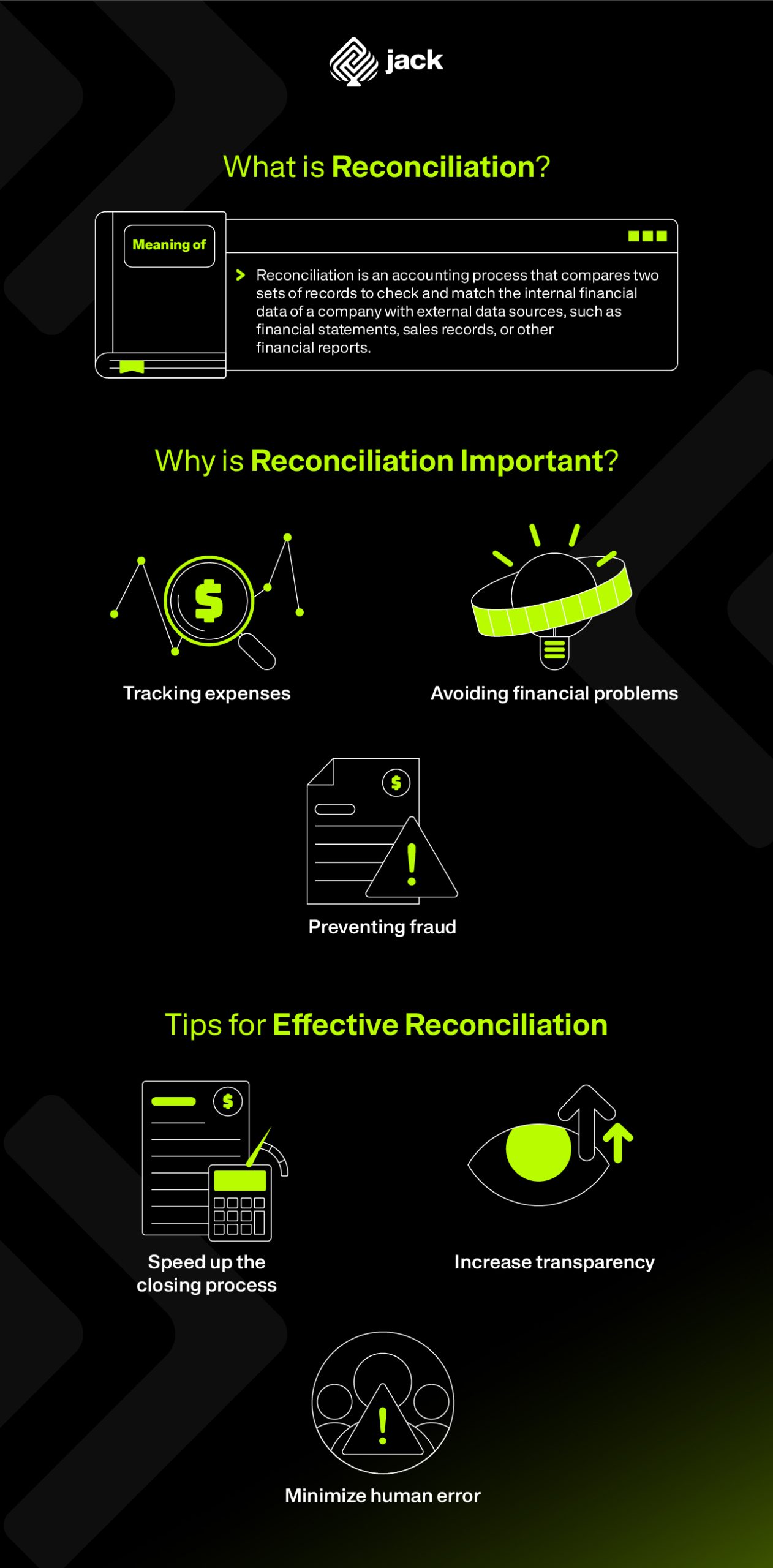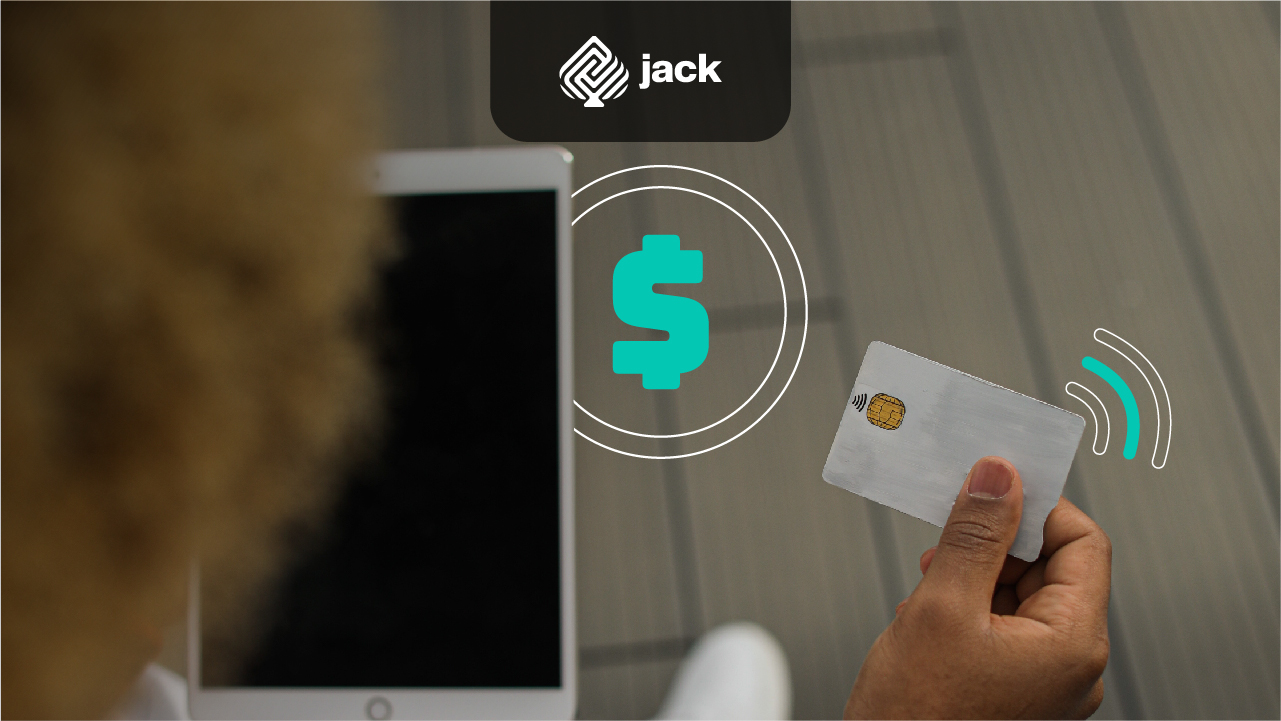Don’t think that losses in business are always caused by slow sales. Company cash mismanagement can also be a major cause of business failure.
This is why the process of reconciliation is crucial. Especially with the increasing adoption of technology and advanced tools, many companies have large volumes of data that grow rapidly.
The same goes for financial data that can come from various sources and platforms, posing a challenge for business owners to ensure the consistency and reliability of their financial data.
What is Reconciliation?
Reconciliation is an accounting process that compares two sets of records to check and match the internal financial data of a company with external data sources, such as financial statements, sales records, or other financial reports.
This examination ensures that each figure is accurate, consistent, and complete, thereby improving the accuracy of financial reports. Reconciliation can also help companies prevent fraud, such as fictitious reporting or cash misappropriation.

How Do Companies Perform Reconciliation?
There is no specific method for performing reconciliation, but the basic principle is that companies compare internal records with external records. Some things that need to be checked include payments and deposits, bank statements for all outgoing and incoming cash flows, and recording payable expenses.
Although there is no specific method, Investopedia mentions that the concept of reconciliation is actually applied in the double-entry accounting method, which is the fundamental principle of accounting.
The double-entry system or double-entry bookkeeping uses rules that require every financial transaction to be recorded in two accounts: a credit account and a debit account. This principle is based on the concept that every transaction has an impact on at least two financial aspects of the company.
The credit side shows income or incoming funds, while the debit side records expenses. To maintain the balance between assets, liabilities, and equity, the two sides must be equal or balanced.
Why is Reconciliation Important?
For those working in the financial field, reconciliation is usually mandatory. However, even if it is not required, most businesses still choose to do it because of its significant benefits, including:
- Reducing errors: There is always a possibility that internal financial reports contain errors. However, errors can also originate from external sources, such as banks making transaction recording mistakes. Regular reconciliation helps companies track and rectify errors promptly.
- Tracking expenses: Some businesses deal with multiple suppliers or vendors and may have numerous bills to pay every day. However, payments may not be recorded in the general ledger, or payments may accidentally be transferred twice. Such errors can be identified through cross-checking between the company’s data and the supplier’s data.
- Avoiding financial problems: Human errors in financial record-keeping are possible. However, when it comes to business matters, such errors can result in losses. By performing reconciliation at least every month, businesses can track their income and expenses in detail.
- Preventing fraud: Through reconciliation, fraudulent or unauthorized transactions can be uncovered. By regularly comparing various financial records, such as bank statements, internal transactions, and supporting documents, companies can identify discrepancies and minimize the chances of fund misappropriation or fraud.
Types of Reconciliation

Each type of reconciliation has specific objectives and procedures, but all aim to ensure the accuracy and consistency of recorded data. Here are the differences between the two main types:
1. Personal Reconciliation
Reconciliation can be done for personal purposes, and many individuals already practice it. For example, someone may compare written checks, debit receipts, and credit card receipts with bank statements.
Through this cross-checking process, individuals can ensure that financial institutions do not make mistakes in their financial records or identify indications of card fraud by others.
2. Business Reconciliation
Reconciliation is mandatory for any business. Companies must reconcile their accounting records to prevent accounting errors, especially for detecting potential fraud. Typically, companies perform balance sheet reconciliation every month after the closing process of the previous month.
Some reconciliations are necessary to ensure that cash inflows and outflows are consistent between the income statement, balance sheet, and cash flow statement.
Reconciliation Can Be a Challenging Process
For accountants, reconciliation is often a task that can be frustrating. Moreover, there are several factors that can make the reconciliation process quite difficult, including:
1. Lack of oversight
Sometimes, expense or sales transactions may go unrecorded in the general ledger. This can happen due to misplaced or omitted invoices. Negligence like this makes tracking transactions more difficult.
2. Duplicate payments
Making double payments on the same invoice is a common problem in many companies, especially in fully manual processes. As a result, the internal cash expenditure report may differ from the transaction records from the bank.
3. Transaction delays
Banks may not process transactions on the same day, such as check processing, which requires time for verification. This can lead to inconsistencies between internal records and bank statements.
For example, a company may record a check payment on May 25th. However, due to transaction processing delays by the bank, the transaction may only appear in the bank statement on May 28th.
Tips for Effective Reconciliation
Companies do not have to perform reconciliation manually as there are many software options available for automated reconciliation. Generally, such software utilizes AI technology or artificial intelligence to automate the comparison process between different financial data sets.
Using software is a fast and effective way to compare general ledgers, bank statements, financial reports, verify documentation, and most importantly, automatically investigate discrepancies. Here are three key points highlighting why reconciliation software is an ideal choice:
#1 Speed up the closing process
The main advantage of automation is the time saved in manual reconciliation processes. By eliminating manual reconciliation, companies can expedite the closing process.
#2 Increase transparency
Using software allows companies to perform reconciliations with high standards. During the reconciliation process, an automated system ensures that everyone on the finance team has a common understanding and working method.
The software also acts as a platform that provides better visibility for all stakeholders, allowing them to see who is doing what and when. Every transaction is recorded in the system, visible to everyone in the finance team.
#3 Minimize human error
Automated reconciliation can be a solution to eliminate errors. Rather than manually checking various spreadsheets or paper records, having software that can detect anomalies within seconds is the best alternative.
Similar to other software related to data analysis, reconciliation tools are specifically programmed with data analytics modeling that allows for precise operation. For example, using predictive analytics techniques, the software processes historical data to identify patterns and make predictions.
If there are patterns indicating significant discrepancies between the transactions recorded in the system and those recorded by the bank during certain months, the predictive analytics algorithm can identify these patterns. The system will then notify users to conduct further checks in similar months in the future.
Overall, reconciliation plays a crucial role in both personal and business finance. On a personal level, reconciliation helps ensure the accuracy and security of our finances, prevents fraud, and provides an overall picture of our expenses.
In a business environment, reconciliation is a critical step in preventing accounting errors, detecting fraud, and ensuring balance.
See also video tutorials from financial and business from Jack.
Use Jack for your business needs
Reconciliation software offers significant advantages, including faster closing processes, increased transparency, and minimization of human errors. By leveraging automated reconciliation, companies can streamline their financial processes and enhance the accuracy and reliability of their financial data.






